From the traffic signals of Dhaka to the floating markets of Barishal, the hog plum, locally known as amra, is now a common sight across Bangladesh. Once grown mostly in homesteads, it is now one of the most popular fruits you can find selling at corners of markets, bus, launch terminals, and rail stations.
For thousands of city vendors, the fruit provides a profitable source of seasonal income between June and October. Hawkers sell it fully prepared – peeled, neatly cut, salted, and often packaged in transparent plastic pouches. But it is the southern farmers who largely deserve the credit for its rapidly rising popularity, and it is they who are the biggest beneficiaries of this trend.
Native to the tropical Americas, the hog plum is making waves in the Barishal and Khulna divisions. Barishal, Patuakhali, Pirojpur, Bhola, Barguna, and Jhalakathi are among the leading districts. Many farmers who traditionally cultivated guava are now adding hog plums to their orchards, attracted by higher market prices and a longer shelf life.
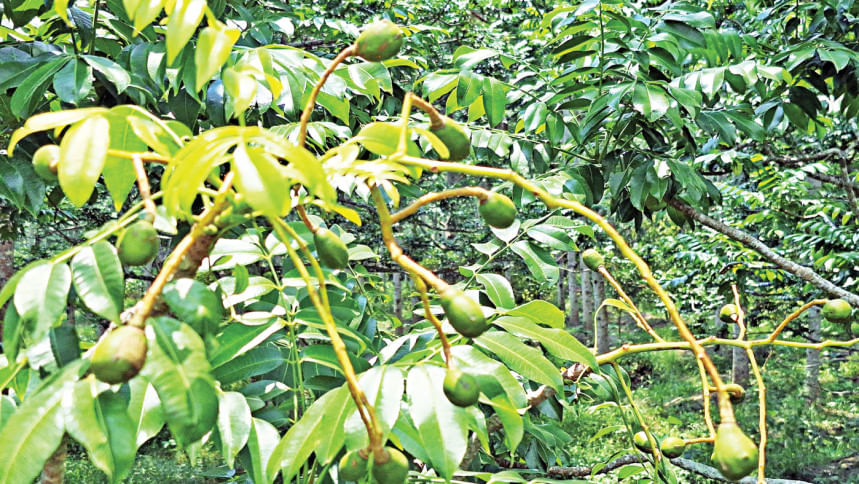
One such farmer from Jhalakathi Sadar, Wahidul Islam Hiru, said he began cultivating guava three decades ago on only two bighas of land, along with a few hog plum trees. Over the years, he has shifted more towards hog plums. Now, on 20 acres of land, he produces 80-100 tonnes of hog plum each year. "I earn over Tk 30 lakh a year from hog plum sales."
Early this season, hog plums sold for Tk 800-Tk 900 per maund (37.32 kg), rising to Tk 1,800 later on, earning him a hefty profit. "Though flowering was slightly lower this year, higher prices offset the loss. This fruit is now the main source of income not just for me, but for thousands of farmers across Barishal."
His point seems valid to anyone visiting the southern region.
During harvest season, rivers and canals across Jhalakathi Sadar, Nesarabad in Pirojpur, and Banaripara in Barishal turn vibrant with green, fruit-laden boats heading to wholesale markets – a scene that has become emblematic of the region's rural economy.
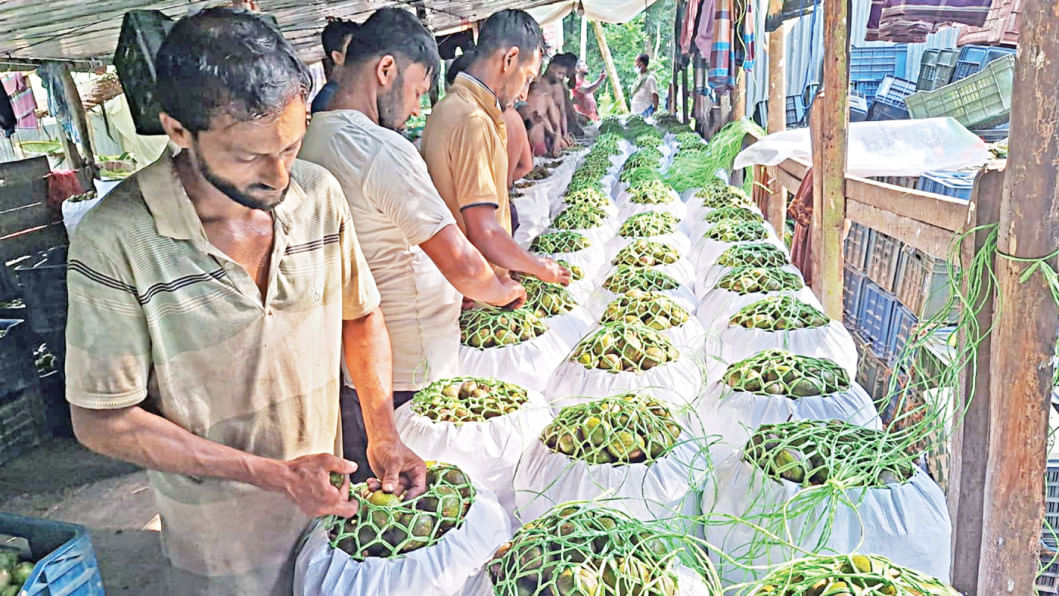
According to the Bangladesh Bureau of Statistics, hog plum production stood at 45,400 tonnes in fiscal year 2023-24. Barishal accounted for 39 percent of the total, followed by Khulna with just over 20 percent.
In Pirojpur, 3,390 farmers cultivated hog plum on 577 hectares (per hectare = roughly 2.5 football fields) this year, producing over 10,000 tonnes worth around Tk 15 crore, said Mohammad Mahfuzur Rahman, deputy director of the Department of Agricultural Extension (DAE).
"The initial cost is slightly higher, but it drops to one-third in subsequent years," he noted.
At Jindakathi village in Pirojpur, farmer Suvash Mondol switched from guava to hog plum and has no regrets. "Guava gave me Tk 1.5 lakh a year. Now, from the same three acres, I get five tonnes of hog plum and make about Tk 1 lakh profit per acre," he said.
Mondol's expense stands at Tk 1 lakh per acre, including 200 kg of fertiliser and Tk 40,000 in labour. He sells hog plums for Tk 1,200 per maund early in the season and Tk 1,800 later, sending truckloads to Dhaka and Sylhet.
Deepak Maitra, another seasoned farmer from the same village, said, "From one bigha (0.62 acre) of land, I harvested about 50 maunds of hog plum and sold them for around Tk 70,000-Tk 75,000."
He added that from the same amount of land, he earned only Tk 17,000 by selling guava from his orchard.
Across the Barishal Division, hog plum was grown on 1,849 hectares this year, producing around 24,000 tonnes worth an estimated Tk 100 crore, according to regional DAE data. The crop was cultivated on 315 hectares in Patuakhali, 251 in Barishal, 72 in Barguna, and 32 in Bhola.
"Hog plum offers better market value and longer shelf life, so many farmers are incorporating it alongside their guava orchards," said Barishal DAE Additional Director Nazrul Islam.
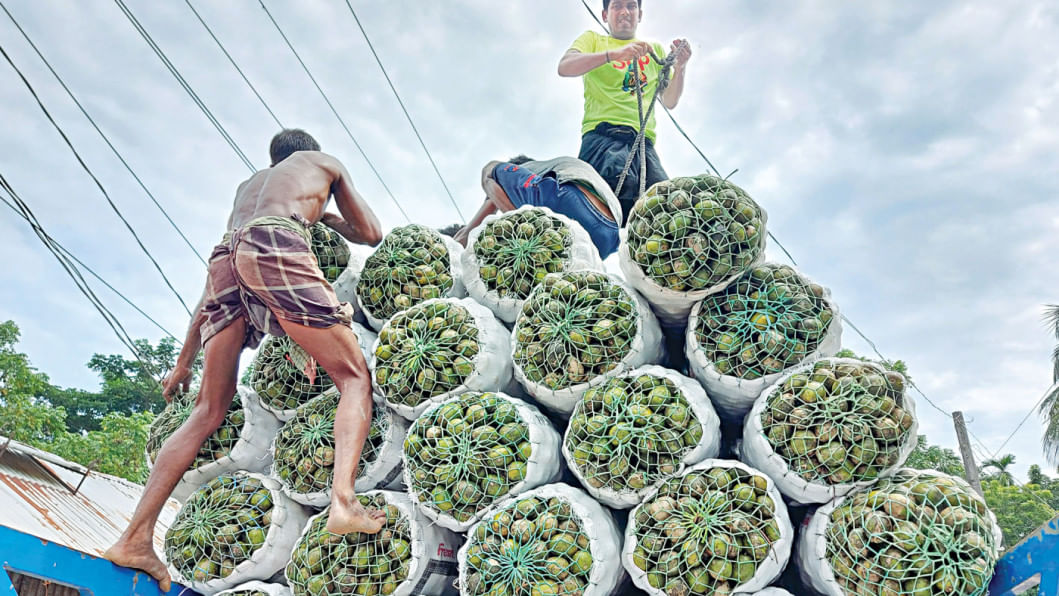
Jhalakathi alone produced 4,578 tonnes from 602 hectares, said DAE Deputy Director Md Abdullah Al Mamun. "Per acre, production costs Tk 75,000-Tk 80,000, while returns reach up to Tk 1.7 lakh. After hog plum received Geographical Indication status, its value and importance rose further," he said.
Wholesaler Tapas Bepari said some 50-60 major traders operate across the three southern upazilas, each shipping 200-300 maunds of hog plum daily to major cities like Dhaka and Sylhet.
Still, farmers say they are missing out on higher profits due to the lack of local processing facilities and fair market prices.
"We don't have factories or cold storage, so we don't get the added value our produce deserves," said Nityananda Samaddar, a farmer from Jhalakathi.
"Many tourists visit the floating markets of hog plum, guava, and vegetables, but farmers still depend on the wholesale prices fixed by Dhaka traders. We want fair local markets and fruit-processing factories established here," he added.




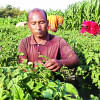
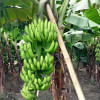
Comments